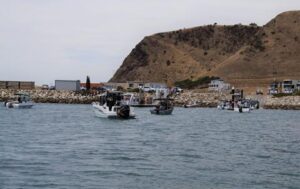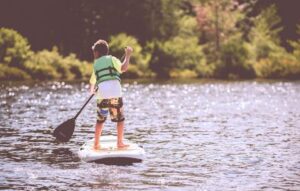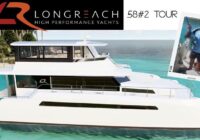Keep reading for the news highlights from Marine Safety in South Australia.
Harbors and Navigation Act Regulation Amendments
On 10 February 2022 amendments were made to the Harbors and Navigation Act Regulations to help make it safer for boaters.
The key changes included:
- Children less than 12 years of age being able to wear automatically inflatable lifejackets.
- From 1 January, 2025 lifejackets made under the Australian Standard AS 1512 will no longer be acceptable for people to use.
Automatically inflatable lifejacket changes:
- Children less than 12 years of age or who weigh less that 40kg can now wear automatically inflatable lifejackets that are clearly labelled to inflate automatically (e.g. – after coming into contact with water). Although they inflate automatically, they will generally also have a pull cord.
- Children less than 12 years of age or who weigh less that 40kg can not wear inflatable lifejackets that require manual inflation (e.g. – pulling a cord only).
- All inflatable lifejackets must be serviced regularly in line with the manufacturer’s instructions (generally once a year). Please make sure the lifejacket fits your child properly. DIT recommends a crutch strap be used.
- Phasing out of old Australian lifejacket standard AS 1512 from 1 January 2025
- Older lifejackets made under the Australian Standard AS 1512 cannot be used from 1 January, 2025.
- The majority of boaters already have lifejackets on board that meet the Australian Standard 4758.1
- Standards currently acceptable are available here.
There is another change that will start from the 30 May, 2022 that impacts those operating vessels from 4.8 metres to 12 metres in length:
- When operating alone on a vessel this length you must currently wear a lifejacket when on the open deck of your vessel. This is one of the heightened risk requirements.
- The change coming in means even if you are operating with a child 12 years or under you are still seen as operating alone and must also wear a lifejacket.
Australia Day operations
With the weather perfect on Australia day, coastal and river waters were flat out with recreational boaters and personal watercraft users.

Marine Safety Officers were at multiple locations checking that boaters had the right safety equipment on board.
32% of vessels checked were non-compliant on Australia Day. The most common issues were people not wearing lifejackets, not having the correct safety equipment on board, speeding and expired flares.
Visit the Marine Safety SA website to check you have everything you need.
Paddleboarding – Wear a Lifejacket
Paddle boarding has become very popular on both the inland and coastal waters of South Australia. Paddle boards can be great fun but make sure you know when you must wear a life jacket. It depends on where you are paddle boarding.

Q: Are you paddle boarding on protected waters (e.g. inland waters like the River Murray)?
A: You must wear a level 50S, 50, 100 or higher lifejacket at all times.
Q: Are you paddle boarding on semi-protected waters (less than 400 metres from the shore)?
A: There is currently no requirement to wear a lifejacket, but we would highly recommend wearing one to help keep you safe.
Q: Are you paddle boarding on semi-protected waters (more than 400 metres from the shore)?
A: You must wear a level 50S, 50, 100 lifejacket or higher at all times.
Q: Are you paddle boarding on unprotected waters (more than 2 nautical miles from the coast or the banks of Lake Alexandrina and Lake Albert)?
A: You must wear level 50, 100 or higher lifejacket at all times.
With wind, waves, tides and rips impacting paddle boarding it is vital you understand how easily a paddle board can move quickly away from the shore or how you can easily be tipped off.
It can be hard work paddling back into shore, particularly for children. Wear a lifejacket to help keep you safe.
Personal water craft (PWC) – please keep a safe distance from vessels towing skiers
The video below reminds PWC operators, commonly known as jet ski operators to please keep a safe distance from ski boats towing skiers or wakeboarders. Please remember a vessel must not travel within 100 metres of, or directly behind, a person who is being towed by another vessel.
Remember there is a 4-knot speed limit for PWC’s and motorised boats:
- within 50 metres of any person in the water i.e – adults and children swimming or playing in the water
- within 50 metres of any person in the water on a small unpowered vessel like a canoe, kayak, paddleboard or similar unpowered vessel
- within 30 metres of any other vessel, whether stationary or underway that may be impacted by your wash
- within 100 metres of a ferry crossing on the River Murray
- within 200 metres of the metropolitan coastline
- other designated areas, always check to see what might apply in the area you operate.
The river is everyone’s playground. Stay safe on the water.







